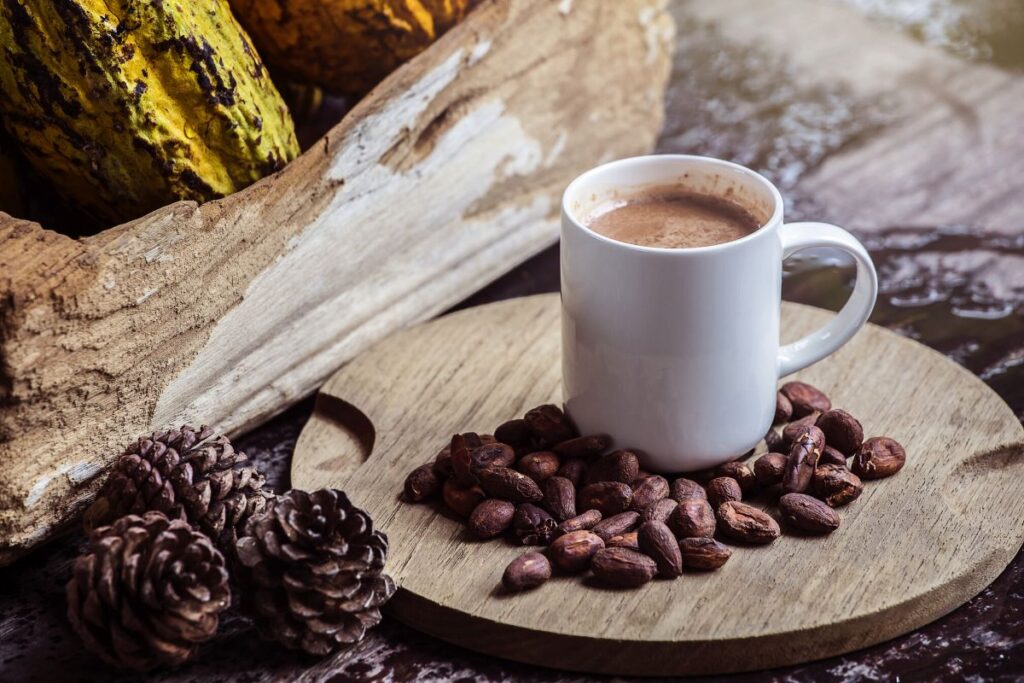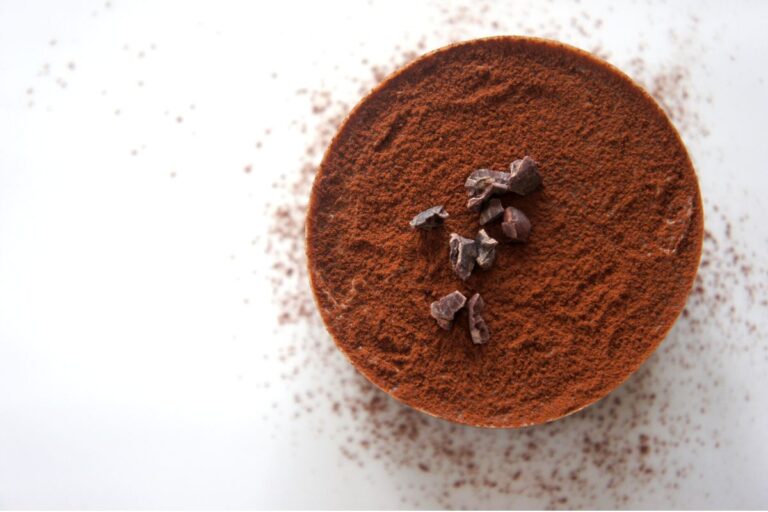Hey, chocolate lovers!
A few years ago, I was baffled to find out that some American adults – not even children – think that brown chocolate comes from brown cows! How ridiculous!
Well, just so you know, chocolate basically comes from cocoa beans.
In this article, I’ll share with you 16+ cocoa bean facts.
By Lilian.
5 Cocoa Bean Facts
Cocoa Beans Only Grow in Tropical Climates
First and foremost, cocoa beans are fruits of cocoa trees.
According to NOAA Climate.gov, cocoa trees flourish in tropical rainforests.
Such areas have fairly uniform temperatures (65-90 Fahrenheit), high humidity levels, a lot of rainfall, soil that’s super-rich in nitrogen and away from too much wind.
This climate is typically found in regions within 10° north and south of the Equator, anywhere around the globe.
There are 4 Types of Cocoa Beans
They’re derived from the four varieties of cocoa plants described below.
Forastero
They’re the most popular, accounting for 80-90% of the world’s cocoa production.
Criollo
They’re the least resistant to disease and also the most expensive cocoa beans you’ll ever find.
Trinitario
This variety is a hybrid of Forastero and Criollo.
Nacional
This variety only grows in South America, and is nearly extinct.
Cocoa Beans Grow Best in the Shade
An article posted on CABI, a forest science database, mentions that cocoa was originally a shade crop.
The trees grew under the canopies of native trees such as papaya, banana, rubber or mango trees.
These shade trees act as a buffer against extreme sunlight and also help maintain a humid environment.
With time, farmers started growing cocoa trees in full sun.
But still, as UNDP Ghana puts it, shade grown cocoa trees have higher quality and quantity yields.
Cocoa Beans Were Once Used as a Currency
According to NDTV Food, cocoa beans served as a currency in 1900 BC to buy food and clothes.
One turkey cost 100 cocoa beans!
Cocoa Beans Are Different from Cacao Beans
Cacao beans refer to those seeds from pods that have been dried and not processed as much, nor roasted.
On the other hand, cocoa beans are a highly processed version of cacao beans.
Cocoa? Cacao! Cocoa!?
Stefan Struik, the co-founder of a popular Cambodian cocoa company, Kamkav Farm, mentions that the word ‘cocoa’ is actually a spelling mistake!
It’s supposed to be ‘cacao’, and it was so until the mid-18th century.
It all started when the Spanish moved to America in 1500 BCE, and translated the indigenous name of these delicious beans – kakawatl – to cacao.
Later on, in 1755, a British dictionary authored by Samuel Johnson misspelled ‘cacao’ as ‘cocoa’.
The dictionary was perceived as the holy bible of the English language at the time.
So, everybody now changed from ‘cacao’ to ‘cocoa’.
It was all a typo!
Let’s now explore the world of cocoa farming.
5 Random Cocoa Farming Facts
The First Cocoa Trees in America Were Planted 10 Million Years Ago
Scientists suggest that the first cacao tree on earth was around 10 million years ago.
Most of the World’s Cocoa Beans Come from West Africa
According to Statista, 4 West African countries produce 70% of the world’s cocoa.
The countries are:
- Ivory Coast
- Ghana
- Cameroon
- and Nigeria
Ivory Coast is the World’s Leading Cocoa-Producer
Business Insider Africa mentions that Ivory Coast is the leading cocoa producer globally at more than 2.2 million metric tons of cocoa beans every year.
40% of its export income comes from cocoa beans.
Cocoa Trees Are Pollinated by Flies
Experts from The Natural History Museum reveal that flies play the biggest role in the movement of pollen from one cocoa tree to another for fertilization to occur.
Female flies in the Ceratopogonidae family are the primary pollinators of cocoa trees.
A Cocoa Tree Can Live for Two Decades!
According to experts from the Sandiego Zoo Wildlife Alliance, despite living that long, the tree only provides marketable cocoa beans for 25 years.
In the 25 years, each tree produces 1,000 cocoa beans yearly.
That’s just enough for 2.2lbs of chocolate, every year.
So, in 25 years of its productivity, a single cocoa tree only gives us 55 lbs of chocolate!
Now, how much do you know about the nutritional facts of these delicious treats?
Read on!

3 Fun Facts About Cocoa Powder
There are Two Types of Cocoa Powder
Dutch-process and natural cocoa powder.
Dutch-process is prepared by washing cocoa beans using an alkaline solution to neutralize the acidity.
The natural variety is just the powder extracted from roasted and ground cocoa beans.
Cocoa Powder is a Mood Enhancer!
Having a bad day?
Grab some cocoa powder!
Cocoa powder contains a compound called phenethylamine which stimulates the release of mood-enhancing hormones in the brain!
2 Scientific Facts About Chocolate
Chocolate May Trigger Headaches
A research posted on NCBI reveals that chocolate is the most popular food that triggers migraines, especially when taken in large doses.
Chocolate has a Relaxing Effect
The phenethylamine in chocolate triggers the brain to release dopamine (the feel-good hormone) and norepinephrine.
According to Vivian, the Director of Tao Massage, the combination of all these chemicals contributes to that relaxed, euphoric feeling.
Just like the one you get after a massage!
Photos by Delphine Hourlay and World_of_Plants





